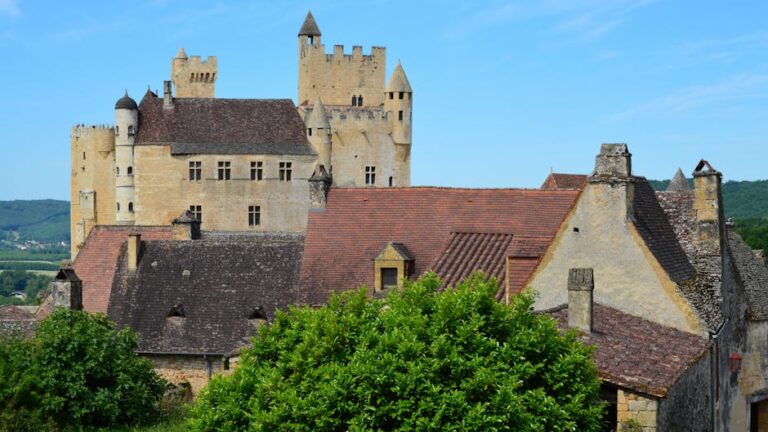A Journey Across Time: Exploring New York’s Iconic Bridges
A Journey Across Time: Exploring New York’s Iconic Bridges
New York City, a metropolis defined by its relentless energy and breathtaking skyline, owes much of its character to its impressive network of bridges. These steel and concrete giants aren’t just functional crossings; they’re iconic symbols, woven into the fabric of the city’s history, culture, and identity. From the graceful arches of the Brooklyn Bridge to the modern spans of the Verrazano-Narrows Bridge, each bridge tells a unique story, reflecting the city’s evolution and its enduring spirit.
The Brooklyn Bridge: An Enduring Symbol of Innovation
No discussion of New York bridges is complete without mentioning the Brooklyn Bridge, arguably the most iconic bridge in the world. Completed in 1883, this masterpiece of 19th-century engineering was a marvel of its time, representing a triumph of human ingenuity over seemingly insurmountable challenges. Its construction, overseen by John A. Roebling and later his son Washington Roebling, was fraught with difficulties, including a devastating accident that claimed the life of the elder Roebling. The bridge’s innovative use of steel cable, a revolutionary approach for the era, allowed it to span the East River, connecting Manhattan and Brooklyn.
More than just a structural feat, the Brooklyn Bridge became a symbol of hope and progress during a period of rapid industrialization and urban expansion. Its majestic towers and elegant suspension design captured the imagination of the public, inspiring artists and writers alike. Today, walking or cycling across the Brooklyn Bridge offers breathtaking views of the city skyline, making it a must-do activity for tourists and locals alike. The bridge’s enduring popularity is a testament to its timeless design and its significant role in New York City’s history.
Manhattan Bridge: A Sleek Silhouette Against the Skyline
Completed in 1909, the Manhattan Bridge, with its distinctive suspension design, offers a striking contrast to the Brooklyn Bridge’s more ornate style. Its sleek lines and streamlined structure reflect the evolving aesthetic preferences of the early 20th century. While lacking the same historical weight as its older counterpart, the Manhattan Bridge has become an equally important artery for transportation, handling a significant volume of vehicular and pedestrian traffic.
Its strategic location provides unparalleled views of Lower Manhattan and the Brooklyn Bridge itself, making it a favorite location for photography and sightseeing. The bridge’s impressive scale and its role in facilitating the flow of people and goods across the East River further solidify its position as a critical component of the city’s infrastructure and a notable landmark in its landscape.
Williamsburg Bridge: A Bridge of Art Deco Elegance
Built in 1903, the Williamsburg Bridge boasts a unique blend of structural strength and aesthetic grace. Its Art Deco detailing, particularly visible in its intricate towers and graceful cables, adds a touch of elegance to its functional design. Unlike the Brooklyn and Manhattan Bridges, the Williamsburg Bridge offers a more intimate connection with the surrounding cityscape. Its lower profile allows for closer interaction with the buildings and neighborhoods it connects, creating a sense of immersion in the urban environment.
The Williamsburg Bridge has become a favorite among cyclists and pedestrians, offering stunning views of the East River and both Manhattan and Williamsburg. Its distinctive aesthetic and its role in connecting two vibrant communities add another layer of meaning and importance to its already significant contribution to New York City’s infrastructure and urban fabric.
Verrazano-Narrows Bridge: A Modern Marvel Spanning the Narrows
Completed in 1964, the Verrazano-Narrows Bridge represents a leap forward in bridge engineering. Its impressive span, one of the longest suspension bridges in the world, connects Staten Island to Brooklyn, opening up new transportation routes and expanding access to various parts of the city. The bridge’s modern design, a stark contrast to the earlier suspension bridges, highlights the advancements in materials and construction techniques that were achieved in the mid-20th century.
The Verrazano-Narrows Bridge is a testament to the city’s continued growth and its ongoing pursuit of innovative solutions to transportation challenges. Its immense scale and striking profile dominate the skyline, serving as a powerful reminder of human ingenuity and ambition. Its iconic twin towers provide breathtaking views of the New York Harbor and the surrounding landscape, adding to its status as one of the city’s most remarkable landmarks.
The George Washington Bridge: A Gateway to the Palisades
Spanning the Hudson River, the George Washington Bridge is not only a vital transportation link but also a breathtaking architectural achievement. Its soaring towers and graceful suspension design create a majestic silhouette against the backdrop of the Palisades. The bridge’s completion in 1931 marked a pivotal moment in the city’s history, solidifying its connection to New Jersey and facilitating the growth of the metropolitan area.
The bridge’s location offers spectacular views of the Hudson River, the Manhattan skyline, and the New Jersey Palisades. It serves as a powerful symbol of the region’s history and its continuing evolution. The bridge’s enduring presence in the landscape makes it a beloved landmark and a testament to the enduring impact of well-planned infrastructure projects.
Beyond the Iconic: A Look at Lesser-Known Bridges
While the bridges mentioned above are widely recognized, New York City boasts a vast network of lesser-known bridges, each with its own unique history and character. These bridges, often overlooked, play a vital role in connecting neighborhoods and facilitating the daily lives of New Yorkers. Exploring these less-traveled spans offers a different perspective on the city, revealing hidden gems and unexpected views.
- Queensboro Bridge: Its Art Deco design and stunning city views are often overshadowed by its more famous counterparts.
- Triborough Bridge: This complex structure with multiple spans connects three boroughs, adding to its historical and logistical significance.
- Hell Gate Bridge: A marvel of steel engineering, this impressive cantilever bridge spans the East River, offering captivating views.
Each bridge, whether iconic or lesser-known, contributes to the rich tapestry of New York City. They are more than mere crossings; they are integral parts of the city’s identity, shaping its landscape, influencing its culture, and connecting its diverse communities.
The Future of New York’s Bridges
As New York City continues to evolve, its bridges will continue to play a vital role in its infrastructure and its identity. Ongoing maintenance and modernization efforts ensure that these iconic structures remain safe and functional for generations to come. While new bridges might be constructed in the future, the existing network will continue to stand as testaments to human ingenuity and the enduring power of architectural and engineering achievement. Their stories continue to unfold, forever linked to the dynamic history and vibrant spirit of New York City.






